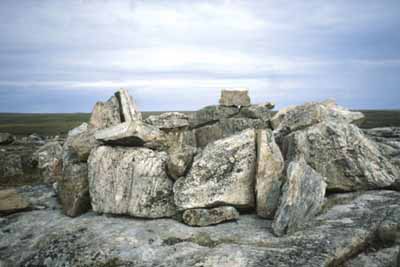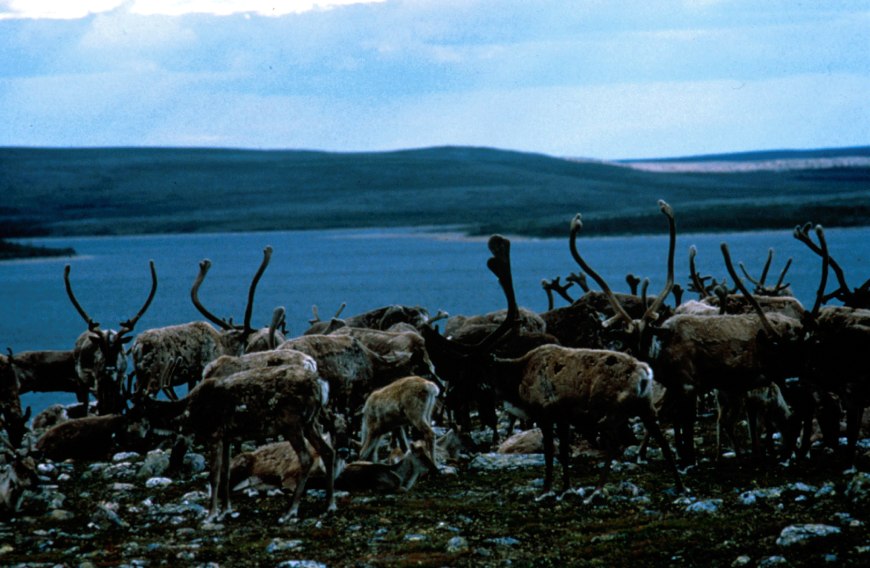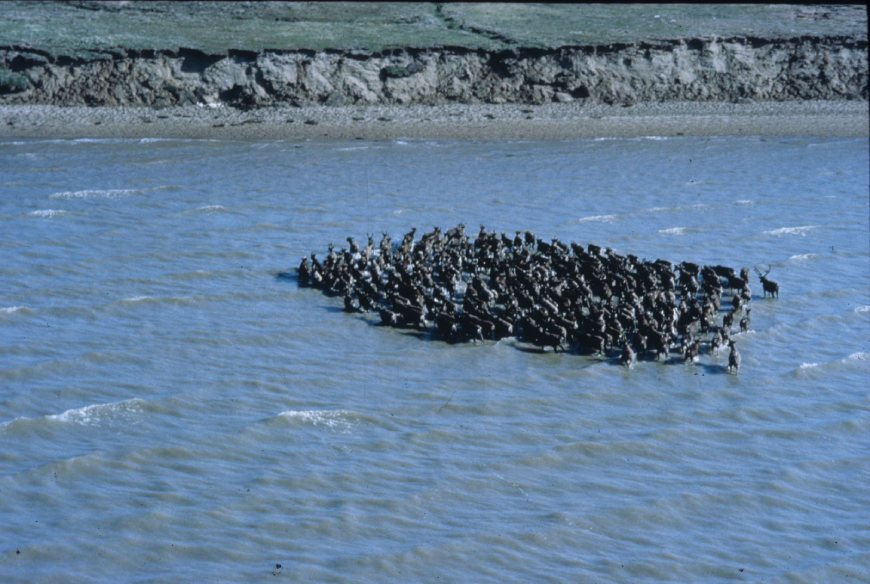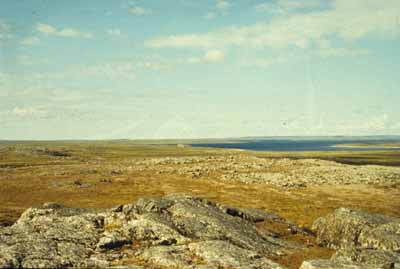Fall Caribou Crossing National Historic Site
The fall caribou crossing on the Kazan River has been designated as a national historic site in 1995.
Commemorative plaque: Inuit Heritage Centre, Baker Lake, NunavutFootnote 1
For centuries, the fall caribou crossing on the Kazan River was essential to the inland Inuit, providing them the necessities of daily life and the means to survive the long winter. Once in the water, the caribou were vulnerable to hunters in kayaks who caught and lanced as many animals as possible. The Inuit cherished and cared for the land at crossing areas in accordance with traditional beliefs and practices to ensure the caribou returned each year during their southward migration. To inland Inuit, the caribou were the essence of life, providing food, fuel, tools, clothing and shelter.

Description of historic place
Fall Caribou Crossing National Historic Site of Canada spans a section of the lower Kazan River (Harvaqtuuq) between the Kazan Falls and the narrows in Thirty Mile Lake (Quukilruq) in the Territory of Nunavut. In this area, the river has an east-west orientation, and is relatively narrow with gently sloping shorelines. The entire area is criss-crossed with extensive caribou trails. The designation refers to the entire cultural landscape with its associated resources.


Heritage value
Fall Caribou Crossing was designated a national historic site of Canada in 1995 because:
- the Fall Caribou Crossing hunt on the Kazan River, focusing on the inland or caribou hunt, speaks eloquently to the cultural, spiritual and economic life of the Inuit in the Keewatin region, and
- stands as a site of particular significance to its community.

The heritage value of Fall Caribou Crossing National Historic Site of Canada lies in its witness to centuries of inland Inuit caribou hunt in a cultural landscape with particular natural geographic features, abundant evidence of human occupation associated with the caribou hunt, and animated by oral histories, cultural traditions and archaeological patterns related to long term inland Inuit use, maintenance and activity. For centuries, the fall caribou crossing on the Kazan River was essential to the inland Inuit, providing them with the necessities of daily life and the means to survive the long winter. Once in the water, the caribou were vulnerable to hunters in kayaks who caught and lanced as many as possible. The Inuit cherished and cared for the land at the crossing areas in accordance with traditional beliefs and practices to ensure that the caribou returned each year during their southward migration. To inland Inuit, the caribou was the essence of life. All parts were valuable for food, fuel, tools, clothing and shelter.
Sources: Historic Sites and Monuments Board of Canada, Minutes, July 1995; Commemorative Integrity Statement, 1997.
The National Program of Historical Commemoration relies on the participation of Canadians in the identification of places, events and persons of national historic significance. Any member of the public can nominate a topic for consideration by the Historic Sites and Monuments Board of Canada.
- Date modified :